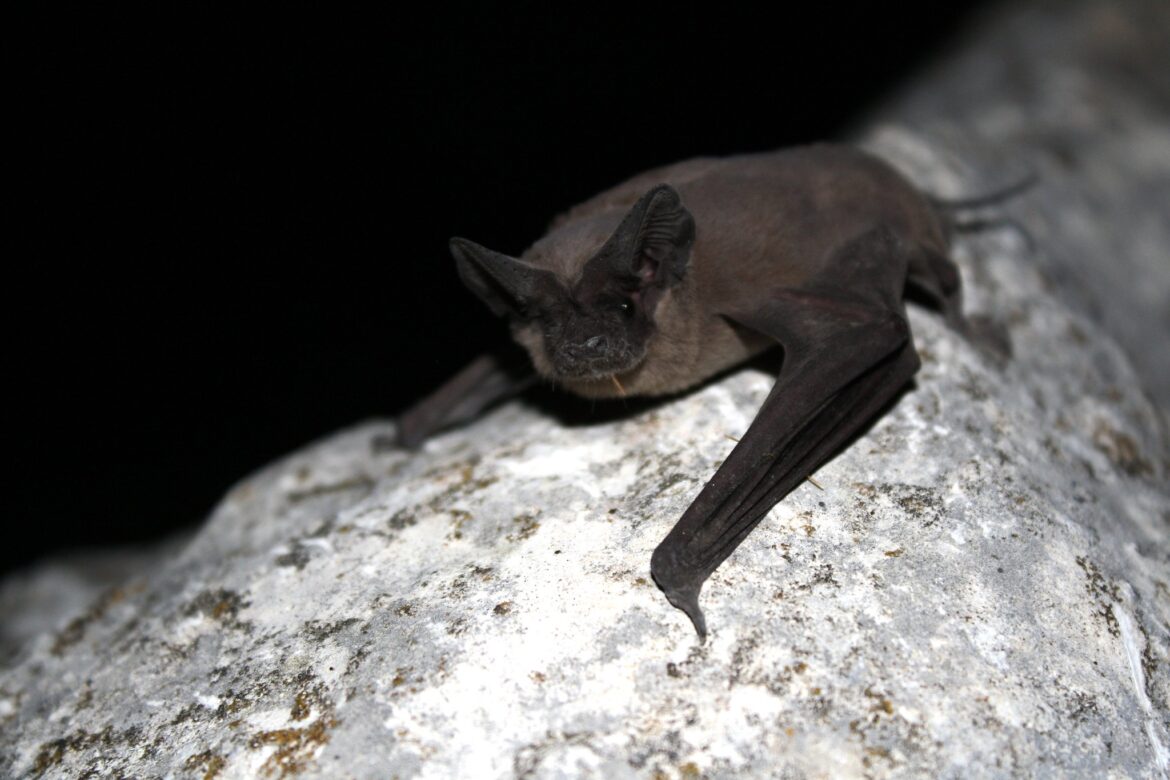
By Susan Heath
Bats live a fascinating life but have been given a bad rap for centuries. They have suffered from superstitions and tales of horror that have spontaneously arisen in many cultures. Do they deserve this reputation? Probably not, but let’s see.
Bats are among the most numerous and diverse groups of mammals in the world. In the tropics, they make up the largest group of mammals, often outnumbering all other types of mammals combined. Bats in the United States are almost all aerial foragers that feed only on flying insects, including mosquitoes!
In the tropics, however, bats have a much more varied diet. They eat fruit, frogs, fish, and the sweet nectar of night-blooming flowers. One species laps the nectar of the night-blooming giant Saguaro cactus, the symbol of the Sonoran deserts of Arizona and Mexico, pollinating it in the process.
In tropical forests bats are very important pollinators of plants and dispersers of the plant seeds. And yes, there is one species of tropical bat which feeds on the blood of warm-blooded animals, giving rise to bloody horror stories in human culture.
Bats are the only mammals that can truly fly. Most are strictly nocturnal, roosting during the day in caves, hollow trees, the canopy of woodland, and in small spaces within buildings that have openings to the outside. Some bats gather in roosts in huge numbers.
The numerous limestone caverns found in the Texas Hill Country house some of the largest aggregations of bats in the world. The exodus of adult bats every evening is one of the great spectacles of the natural world. They emerge in a huge vortex which looks like a tornado and the flight can go on for hours.
The Bracken Cave near New Braunfels claims the world record with an estimated 20 million Mexican Free-tail Bats inhabiting the cave in summer. This is a nursery colony, housing only adult females and their dependent young during summer. The males roost elsewhere.
The incubation rooms where the young are born and raised have year-round temperatures of around 100 ° and high concentrations of atmospheric ammonia from the decomposition of centuries-deep layers of bat droppings known as guano. Bat guano, rich in nitrogen, was mined in the nineteenth century to produce gunpowder and is still highly valued as organic fertilizer.
There is a Mexican Free-tailed Bat colony in downtown Austin in expansion spaces in the Congress Avenue bridge. Residents and tourists alike, gather each evening in the warm seasons to watch the exodus. Austin is an enthusiastically bat-friendly community.
Some bats do carry rabies and can spread the disease even though they do not actually contract it themselves. To infect another animal, they must come into contact with an existing wound. Rabies occurs in the bat population in approximately the same percentage as it occurs in other non-vaccinated mammals. Any bat found on the ground is injured or sick and should not be handled.
Don’t let superstition and misinformation keep you from enjoying the bats that are common in our neighborhoods. Bats can often be observed just at dusk or just before good light in the morning silently patrolling the air spaces around our homes. Thank them for the mosquitoes that are not present to bite you. Those mosquitoes have a much higher likelihood of spreading disease than the flying mammals which feed on them.
Photo: Mexican free-tailed bat (Tadaria braziliensis)
Photo credit: USFWS/Ann Froschauer

